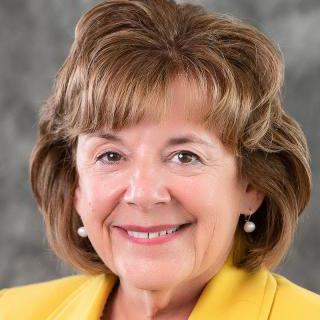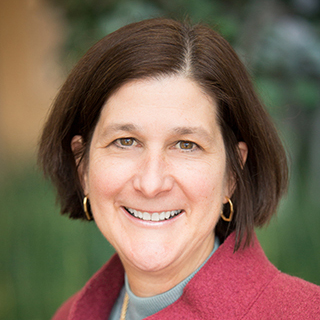By Emily Barske, Business Record editor
One of our goals with Fearless is to connect with people across the state who share goals similar to our mission of empowering Iowa women to succeed in work and life. So far this year, we’ve stopped in the Quad Cities and Sioux City.
And for our next stop, we chose to spend some time in Iowa City.
Earlier this year the University of Iowa was recognized nationally for gender representation in leadership among top higher education institutions. The study by the Eos Foundation looked at representation in key positions, including the president and academic deans.
While in Iowa City, I sat down with some of the university’s female leaders to discuss gender representation, what advice they have for other women leaders and what barriers still need to be addressed in higher education.
The University of Iowa women leaders joining me were:

Barbara Wilson, president of the university.

Amy Kristof-Brown, Tippie College of Business dean.

Harriet Nembhard, College of Engineering dean.

Edith A. Parker, College of Public Health dean.

Sara Sanders, College of Liberal Arts and Sciences dean.

Tanya M. Uden-Holman, University College dean.

Julie Zerwic, College of Nursing Kelting dean.
Wilson is the third female president at the institution, which is rare in higher education, and was days away from being one year into the position at the time of the interview. At the university, women lead half of the academic units. All but Amanda Thein, the Graduate College dean, were able to join the Fearless conversation.
With female students making up more than half of the student body, representation makes a difference, Wilson said.
“I’m really proud that I’m not the first woman president of this university,” Wilson said, adding that it eliminates some of the expectations of how she should act because she’s not the first woman to hold the role. “In a way it sort of lifts the burden of gender off of my leadership. … I’ve had many, many students say to me that it means a lot to them that the university has so many women leaders. It gives them a sense of possibility.”
But there’s still work to do, the group acknowledged.
Kristof-Brown mentioned that the same study that ranked UI so high in gender representation also showed Iowa’s rank of tenured full professors was low. “I look at where we are now based on history, and it feels great,” she said. “I look at the next five years and who the next set of women are that are going to be department chairs, who are going to step into associate provost roles or deanships, and that rank is thin right now. So to me, that’s kind of a mobilizing effect to say if we want to keep this up and not let down the tradition that we have, we need to get moving at the higher levels in our faculty ranks.”
The group described pressure to not only perform well as leaders but to represent all those who identify similarly when they are the first woman in a role or the first in a while. The glass cliff effect, which describes situations in which women are more likely to be appointed to leadership positions in times of uncertainty or when an organization isn’t performing well while men are more likely to be appointed to stable leadership positions, was also brought up.
Here are some of the key points the women spoke about.
Women leaders can help people better see opportunities and barriers that still exist.
Sanders said she’s proud that oftentimes other women on the faculty ask to meet with her because they’ve never worked with a female leader before.
“The second piece that makes me feel really proud is when I have male colleagues who’ve never worked with a female leader come and say, ‘I’ve never understood the challenges that it takes for women to lead until I’ve had to watch you and had to see things that maybe I just dismissed prior,’” Sanders said. Setting an example for both women and men is important, she said.
Women are sometimes held to a double standard when it comes to being nice or vulnerable.
Women in leadership can help challenge the stereotypes of what a woman should be and what a leader should be. Wilson said that Western cultures often believe leaders should be the type of people who are aggressive, charismatic, someone everyone listens to and always confident but never vulnerable.
“[Women] are breaking molds or everyday expectations about how to be a leader and how you are effective,” Wilson said. “One of the things I’ve said to many groups is don’t be afraid to be vulnerable. Be authentic, be real, and sometimes that means saying you don’t know the answer or you made a mistake.
“And for a lot of people that’s very unsettling. Why would you ever showcase that you might have some vulnerabilities? That’s part of that template of leadership that I think women are challenging and being challenged by when I hear the pressures that we’re feeling. It’s because we have a pretty singular model of leadership in this society, and we have to be willing to bust that open a little bit.”
But the idea that being nice or vulnerable is a quality women can bring to leadership presents its own challenges.
In nursing, where the field is predominantly women, Zerwic said, “we almost have the opposite problem, where you’re expected to be the quiet person. And then when you do take a more dominant role, you’re labeled as stepping off the path.”
The next generation wants change. And they want it now.
Nembhard said there are several outside organizations working to hold higher education institutions accountable, but today’s students are also leading the charge.
“The younger generation, the students, are perhaps a bit more impatient for change,” she said. “And it’s been doubly interesting for me having three daughters all in college, and seeing their lens and experience. I’ve shared many times that these young people are not waiting on us to get comfortable.”
Young women in particular are pushing for different systems to help make higher education more inclusive in its accessibility, responsiveness to centering the learner, and in its leadership approaches and representation, Nembhard said. That current pushing will result in change just as it did in their formative years, the leaders acknowledged.
“I think we have a lot of rigidity in our educational systems,” Zerwic said. “I think a new generation will push us to question, is that rigidity of value? Or are there ways we could think differently and transform some of our educational systems?”
Working moms need to be accommodated.
Among the many changes in academia the women leaders have seen over the years, many mentioned that they’ve seen much progress when it comes to incorporating flexibility to include working parents.
But there’s still more work to do on child care, paid family leave – including for graduate or doctorate students – and a general recognition of the juggling working parents face, they said.
Multiple women mentioned times when they were asked, by both male and female colleagues, iterations of questions about when they were going to take their careers seriously because they’d had children. Others mentioned unrecognized or even explicit bias that led to meetings that were held on family holidays or during traditional hours children needed to be taken care of, which disadvantaged many working parents who couldn’t participate during those times and therefore couldn’t further their careers in the same way as others who were able to attend.
Women are generally good at aiding others, so they’re often pushed to do so in lieu of roles that pave the path to leadership.
As in many professions, women in higher education are sometimes pushed to service roles because they are good at helping others. In academia, that might mean a teaching role rather than a tenured faculty role or a committee that helps the culture of departments but doesn’t have governing power, the group said. While those roles are crucial, they often receive less pay and have less say in decision-making.
“I wonder what we might do more to create more space for the people who are actually doing more of that [service] work, to have a commensurate voice on the future change that’s needed,” Nembhard said. “You see those gendered differences and disparities on who can do what in academia, and then what is held as important and rewarded. I think there’s a lot of work for us to do there.”
Parker said service roles were amplified further in COVID when so many students were needing help.
“Those duties combined with what they’re doing at home, which is disproportionate, really do pull [women] back,” she said. “I think we have not figured that out as a society, but particularly at higher institutions, because we know it’s there.”
Official work committees are usually disproportionately led by women, the group said. Some of those committees are considered to be more prestigious, like a promotions and tenure committee, but other committees like an undergraduate recruitment committee, while important and necessary, are not always viewed as highly within evaluations.
There needs to be ways to count the service work toward promotion opportunities, the group members said.
Why should women aspire to be leaders?
“We spend a lot of time talking about the burdens associated with leadership, the barriers, the challenges – and I’ve heard women say, … ‘I don’t want to have to manage all the challenges that you have,’” Wilson said. “So in our effort to try to work on the barriers, sometimes I think we emphasize the barriers so much that we are suggesting to young women that this isn’t a very attractive path and if you’re going to go down it, then just know you’re going to be bucking the system and working your tail off. And that’s not a good message to send. … We have to make sure we make them appealing or it’s going to be a turnoff to a lot of people.”
The group shared the following reasons why women should aspire to be leaders:
- Leaders get to set the conditions for others to succeed, Parker said. “There’s no better feeling than when you see people succeed.”
- Leaders can have a magnified impact and can affect multiple people through decisions, Kristof-Brown said. While anyone can make an individual impact, leaders have influence to change systems because they have access to more people and resources.
- Leaders have internal and external influence, Zerwic said. Sometimes leadership is hands-on and sometimes a leader simply amplifying someone’s voice, especially if that person is underrepresented, can help make change.
- Leaders make an impact through role modeling for the next generation of leaders, Sanders said.
- Leaders are important for mentoring. Mentors can guide mentees on what is needed to take the next step in their career, which is one area where men can help as allies to women, Uden-Holman said.
- Leaders help others and help transform lives, Wilson said. “I never wake up in the morning and think, ‘Why am I doing this job?’ I think, ‘I work at this institution that is changing the world every single day.’ So finding a calling within the leadership realm where you care about what you’re doing, if you have that privilege, it’s something you should be grateful for.”

